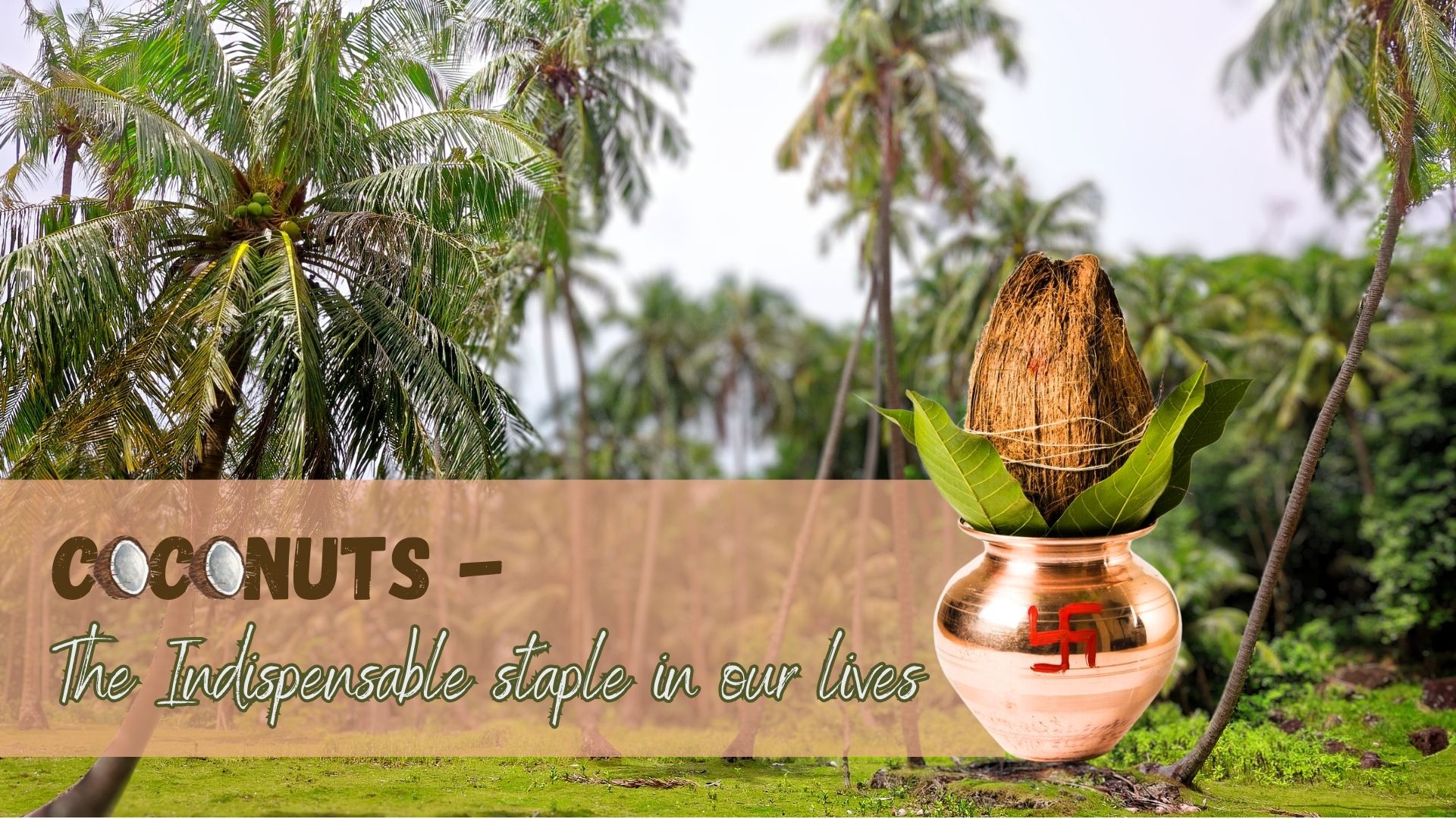
Indian is one country where people are nuts about coconuts!
Not a day goes by in the Indian Household without using coconuts and its by-products. These humble Brown seeds of the tropical palms have also become indispensable elements of any functions, festivals or celebrations. One wonders what is so special about this fruit (or is it a nut?) that makes it an indispensable, holy and absolute must-have in every home.
For a traveller, Coconuts and Coconut trees reminisce of beautiful beaches and tropical exotic lands. For a Botanist, Coconut is neither a fruit nor a nut; He would say that it is a DRUPE ( It is a fruit having a hard stony covering enclosing a seed - similar to peaches or olives. For an Indian, coconuts are holy, auspicious, healthy and an indispensable household name.
USES OF COCONUT
1. Coconut Meat in Cooking - Coconuts are rich in fibre, minerals and antioxidants and be consumed raw and cooked. It is used extensively in traditional Indian Cuisine (especially in the south). The white flesh is scraped and used as one of the most essential ingredients in cooking. Coconut meat is dried first, then ground into a fine powder and consumed as Coconut flour. The shredded Coconut meat is mixed with minimal water and blended; It is then poured through a sieve and squeezed to get Coconut Milk. The milk thus obtained can be widely used in Cooking as well. Coconut milk is also an excellent substitute for milk and can consume by people having milk allergies.
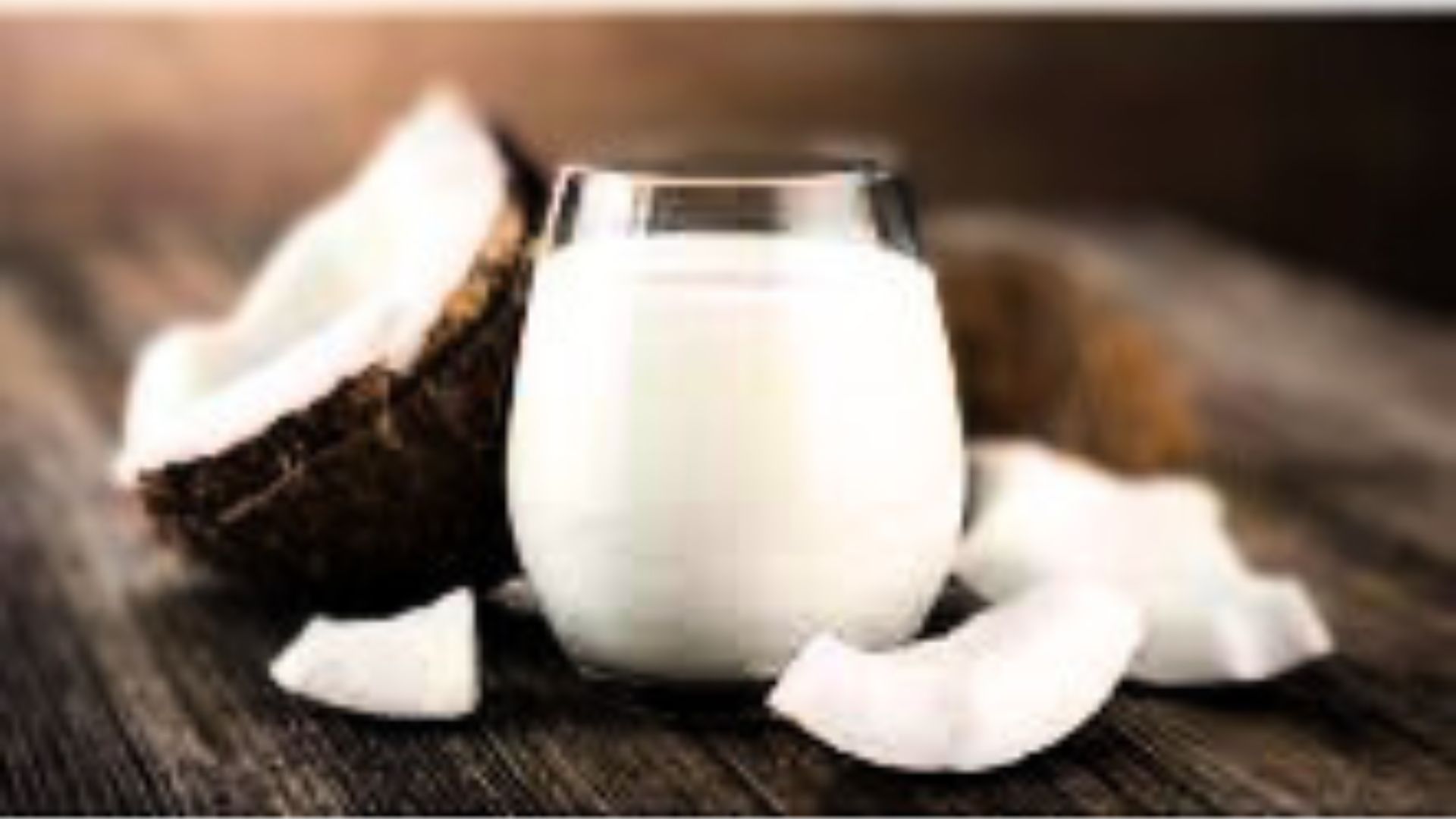
2. Coconut pressed into Oil - The coconut meat is dried in the sun first and later processed to get coconut oil. Coconut oil is used on hair as a hair mask and a conditioner. The oil has cooling properties as well. It is applied on dry skin and chapped lips. Coconut oil is used extensively for cooking, especially in coastal areas like Kerala and Goa. In many parts of the country, it is a common practice to massage newborn babies with coconut oil to improve the texture of the skin. Adults use coconut oil to maintain their oral hygiene by oil pulling - The act of effectively swishing oil around the mouth like a mouthwash for about 10 minutes( Oil pulling is an ancient Indian practice to clean the mouth and teeth. Oil pulling reduces cavities, gum inflammation and bad breath.
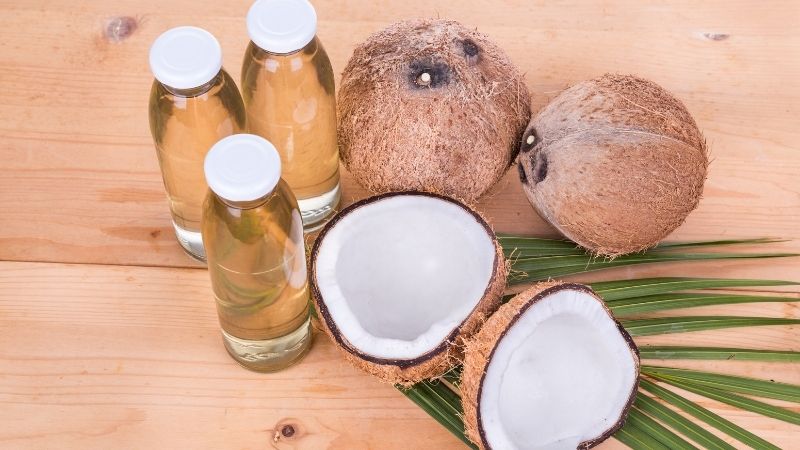
3. Coconut water as hydration - When one breaks open the coconut, mildly sweet water outflows, loaded with antioxidants, nutrients and electrolytes. Drinking this tender coconut water helps to revitalise energy levels, making people recover faster from dehydration and fatigue. Tender coconut water is one of the best alternatives for sugar-laden juices and soft drinks. It is cooling for the body and is best for hot summers.4. The uses of Husk and shells - The hard Shells of the coconut (after extracting the coconut meat) are valuable too. They are a popular art material for DIY activities and beautiful crafts. Numerous items are created out of these coconut shells. Coconut husk also acts as a natural scrubber; and is used to clean vessels and floors. The husks are also used nowadays as craft material. Many individuals make a living out of coconut husks - by making sturdy, eco-friendly ropes. It is a labour-intensive industry; the coir factories are widely spread and make good-quality ropes.
5. Thatching and Sweeping - The coconut trees have long, slender leaves that are thatched and used as fencing or roof for small huts. They are cost-effective and eco-friendly building materials for temporary structures. The leaves of the coconut tree have thin and slender stems in the middle; These stems/ sticks are stripped off their leaves and tied together with twine to make broomsticks.
SPIRITUAL SIGNIFICANCE OF COCONUTS
We cannot think of any Hindu Pooja, festival or ceremony without using coconut because it is considered a divine fruit. Coconuts and Lord Ganesha are connected through a Mythological story in India.
When Lord Ganesha was a young boy, he was active and always used to play. One day, Lord Ganesha was playing near his father, Lord Shiva, who was in deep meditation; Ganesha was fascinated by the three eyes of his father and went to touch them. Lord Shiva was very disturbed, and to refrain his son from disturbing his meditation, he gave Ganesha a coconut to play with. And that is why coconut is always significant and presented to Lord Ganesha before auspicious functions and festivals.
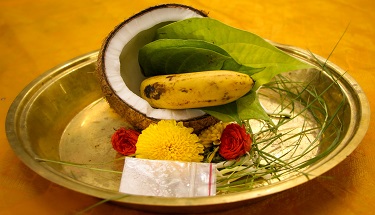
Breaking a coconut also has a spiritual significance in India. A coconut is like a human being, and symbolically, breaking a coconut represents the breaking of the ego of a devotee. When a human surrenders to God / Goddess, his ego gets destroyed. The person is united with the cosmos and attains a state of blissfulness. The coconut shell is hard, like the ego in a person. The act of breaking a coconut represents the ego getting shattered, and the sweet Coconut water flowing out of the coconut denotes the bliss one experiences at the end.
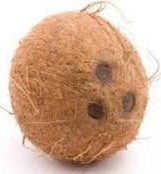
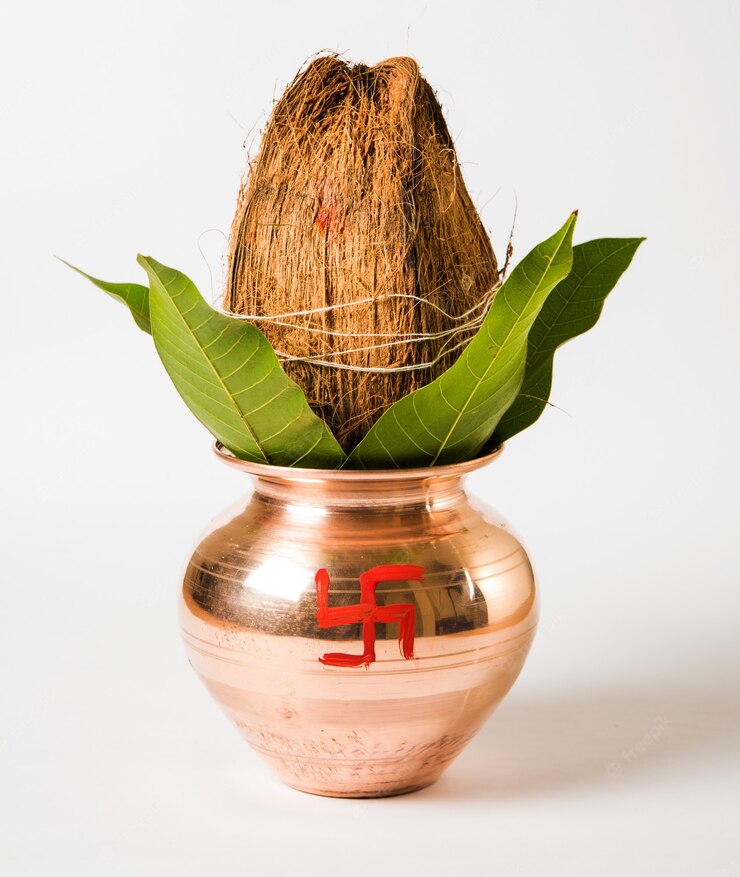 Some Indians believe that the mark of the supreme Gods of Trinity / Trimoorthy is present on a coconut. If one observes the coconut very closely, one can see three spots on it, this symbolises Lord Shiva, Lord Vishnu and Lord Brahma. Alternatively, Indians also believe that the three spots represent the three eyes of Lord Shiva.
Some Indians believe that the mark of the supreme Gods of Trinity / Trimoorthy is present on a coconut. If one observes the coconut very closely, one can see three spots on it, this symbolises Lord Shiva, Lord Vishnu and Lord Brahma. Alternatively, Indians also believe that the three spots represent the three eyes of Lord Shiva.
For all these reasons, coconuts are a part of Kalasha. Kalasha is auspicious and an important symbol of Hinduism. It is usually a pot ( made of Silver or copper) filled with water with a coconut on it. Turmeric powder and other holy materials are mixed into the water, and the head of the coconut is placed facing the top of the pot. The pot is decorated with Beetle leaves, Mango leaves, sandalwood paste and Kunkum. This Kalasha is worshipped during pooja and festivals.
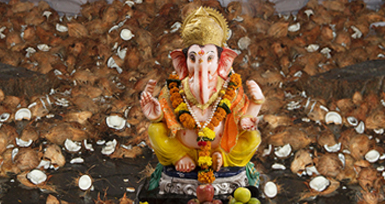
There was a time when animal sacrifices were rampant in society, due to which the great Saint Adi Sankaracharya advocated using Coconuts instead of animals for ritual sacrifices. Breaking coconuts as an offering to Gods and Goddesses is a prevailing element of faith and practice in our country now. Coconuts are utilised in almost all rituals, as part of celebrations or even on Archana plates at temples.
The Archana plates one carries to temples have the humble coconut on them. These plates also include the flowers, beetle nuts, leaves, diyas and camphor for the pooja. People believe that breaking a coconut is auspicious and removes the obstacles in life. When a coconut break opens precisely in half, smoothly (without jagged edges), there will be no obstacle on the devotee's path. Then this is regarded as a positive sign.
Occasionally, the coconuts do not break into equal halves, and on odd occasions, The coconuts have many jagged edges, or the flesh inside may be rotten - when this happens, it is considered a bad omen and a sign of obstacles for the devotee.
Thus, the humble coconut has become an indispensable item of devotion, food, and mythical importance in our country, carrying significance not only in spirituality but also in a person's health.
 I am Vaishnavi Gurusankar, a passionate educator, a wife and a mother. I have over a decade of experience as an educator and have been closely working with teachers and children of all ages. I am also an active parenting blogger and founder of Magical Unicorn, an exclusive parenting blog founded on Indian ethos, values and stories at its core.
I am Vaishnavi Gurusankar, a passionate educator, a wife and a mother. I have over a decade of experience as an educator and have been closely working with teachers and children of all ages. I am also an active parenting blogger and founder of Magical Unicorn, an exclusive parenting blog founded on Indian ethos, values and stories at its core.
NEXT ARTICLE